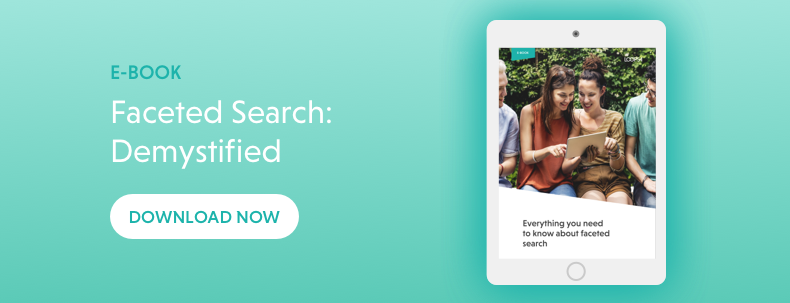In a physical store, it’s obvious that people come in with different intentions. Some people want to make a purchase right away while others are looking to compare products. Some have specific questions while others need trustworthy opinions from an expert.
As an employee, you need to accommodate all customers.
This is also true online. Customers will have the same type of questions whether they come from an external search engine or using the onsite-search function.
Consequently, it’s crucial to understand what content your visitors are looking for and their search intent. As soon as you understand their search queries, you will be able to guide them to the right place.
Searches are often grouped into three categories:
- navigational
- transactional
- informational
With a clear content strategy for each one, you can create a website that targets most search queries in your field.
Navigational searches
These searches are mostly made in search engines, but if you have a large website – perhaps an e-commerce site consisting of several main categories, even more subcategories and a huge amount of products (more than 300) – people tend to make navigational searches on the site as well.
A navigational search, as the name implies, means that someone wants to go somewhere - fast. The intent is often crystal clear. Someone writing New York Post in a search engine most likely want to reach nypost.com. It’s more or less like asking the direction a website.
However, you could also view a broad search on your website as navigational. Say that you operate an electronics website and someone searches for Eyeliner in your search box. Then the search intent is quite unspecific and just providing a list of Eyeliners on sale may be the wrong strategy.
Usually it’s better to create a solid Eye makeup section where you, alongside listing Eyeliners and prices, present content around Eyeliner best practices, qualities in different Eye makeup brands and other things that may be of interest for a potential buyer. When someone comes in through a navigational search, you should be able to say: “Welcome, what can I do for you.”

Informational searches
Quite a few of the searches we make are informational. We want to know what, where, how, and why around a specific topic. While some searches are quite straightforward, like buy Samsung SUHD TV, a search like LED or OLED TV can’t be answered with a list of products. Informational searches are interested in the bredth of results.
By creating in-depth guides, how-to videos, blogs or other content that answer informational searches, you can educate visitors and allow them to make knowledgeable decisions. Informational content also allows you to become a thought leader in your area of expertise and strengthen the entire website.
Gather searches made on your website as well as external data to understand what questions people have. Then it’s up to you to answer them in a suitable way.
Transactional searches
Commercial websites are commonly organized and optimized around transactional searches – and with a good reason. You need content to accommodate people who already know what they want. A search query for a specific TV-set, like Samsung 55" Curved SUHD-TV, should result in a page showing images, price and specs of this particular product.
For SEO-reasons, it’s also good to have added information around the product, preferably unique insights and not only the generic texts provided by the manufacturer. Again, you want to establish authority around what you do. You’re not only selling the product. You know why and for whom this is a good choice.
Remember that you also have the chance to present related items and similar products to do cross-selling and give your visitors a chance to compare products on the site.

Key takeaway
Whatever website you are operating, make sure to have content to match every search intent. Some people just want to navigate to the right section on your site, others have questions and need guidance, and some just want to find a product they are looking for.
Your goal is to provide the right content whether the search is made on your website or an external search engine.
And if that search happens to happen on your site, make sure your have a search engine that can handle both sources of information - product and content - simultaneously.



